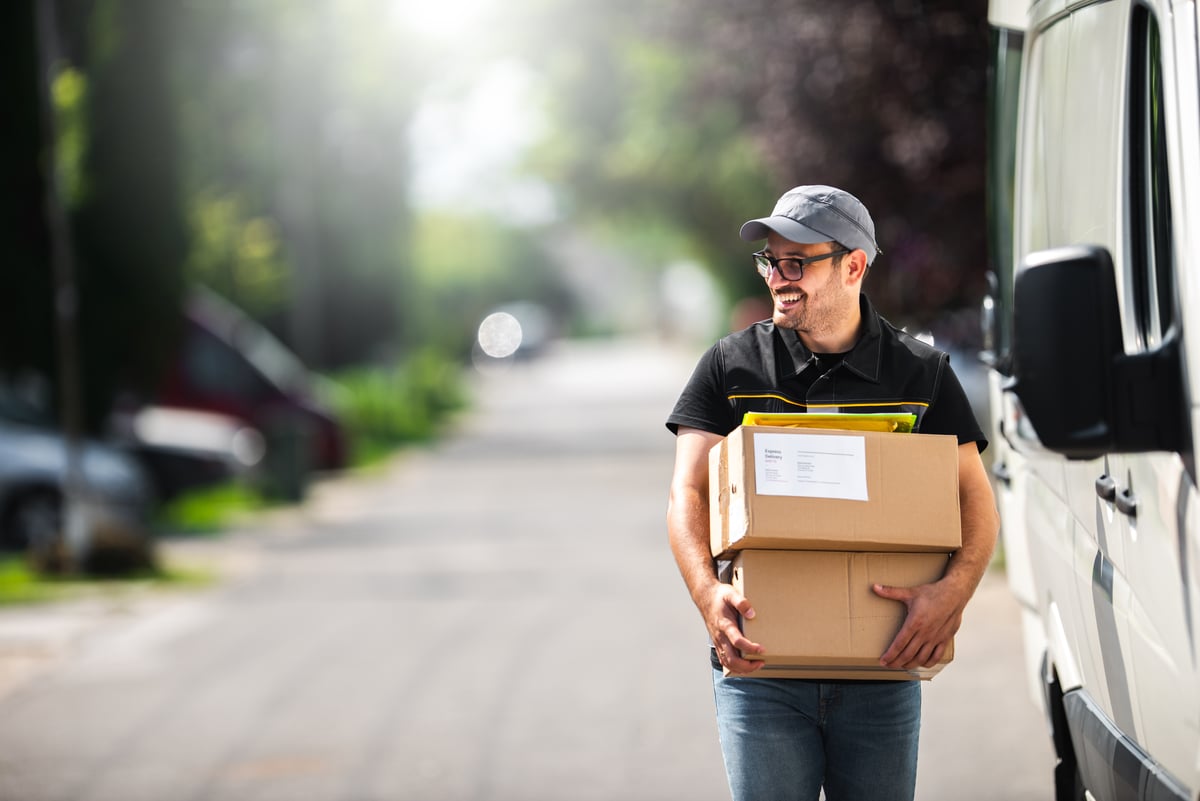It would have been easy to miss -- the world was in the throes of the coronavirus pandemic, and the company didn't make a formal announcement of the move. Regardless, it's worth looking backward for a moment to point out that as of April, Amazon (AMZN +0.50%) is now a full-fledged freight broker.
That is to say, the e-commerce giant widened its well-organized beta test of using its own trucks to ferry goods not just bought by its customers, but transporting third-party parcels as well. The service is now available in all 48 contiguous states, up from five before April.
Then, almost as if on cue, it added 12 cargo jets to its fleet earlier this month, bringing the tally up to 82.
This is the move FedEx (FDX +1.11%) and UPS (UPS +1.02%) were dreading. Although Amazon has yet to up-end either, the stage is set for it to become the third big player in the delivery arena. From here it's just a question of building scale, which is only a matter of time.

Image source: Getty Images.
The middle mile is the other half of the battle
It's interesting. So-called "last-mile" logistics that places products at consumer doorsteps has been something of a battleground of late. But maximizing the efficiency of "middle-mile" logistics to get goods from a factory or warehouse to a distribution hub hasn't seemingly been prioritized. As it turns out, Amazon was quietly moving in this direction all along. It's become a freight broker that can now sell its excess delivery capacity all over the continental U.S.
Amazon's freight brokerage business isn't exactly shredding the competition just yet. Its shipping rates are just average (if not a bit more expensive than average), according to numbers compiled by Freight Broker Live, and its service is currently limited to what in the industry are called dry van full truckloads. Those are the basic 53-foot-long, box-shaped trailers you see being pulled around America's higher. Amazon's freight service doesn't do flatbeds or tankers ... yet.
Never say never, though. At one point, Amazon outsourced 100% of its delivery work to UPS and FedEx.
It's also conceivable that the middle mile rather than the last mile is where most of the efficiency leaps could be made. It just requires technology and scale to do it. Amazon brings both to the table.
Two big ways this helps
The strategic shift accomplishes a couple of key things.
First, it monetizes Amazon's excess delivery capacity. An unused truck or an empty trailer is a wasted opportunity. The workaround is simply not owning trucks and trailers and offloading that problem to the companies that do own them. And fortunately for FedEx and UPS, they've got enough business to keep their equipment in use most of the time for most of the miles they travel.
UPS and FedEx aim to turn a profit though, so when Amazon utilizes either, it's paying more than either carriers' cost. If Amazon can deliver enough of its packages on its own and reach a cost parity with other logistics names, it can at least avoid paying the markup. Renting out its own trucks and trailers to shippers is one way to abate the net cost of ownership.
It matters. Amazon spent $37.9 billion last year, or 13.5% of its revenue, just on shipping costs to and from its warehouses. If it can whittle that figure down even just a little -- or increase its top line just a bit using shipping assets it already owns -- the impact for this low-margin company could be significant. Of last year's top line of $280.5 billion, only $11.6 billion (or 4.1%) of it was converted into net income.
The second (and more important) result of a bigger in-house delivery option is better control of its logistics network.
Now with more planes, a truck fleet that third-party customers are partially paying for, and Amazon's expansive last-mile delivery fleet, the e-commerce company can completely control its logistics operation from start to finish. FedEx and UPS were accommodating partners, but they were never part of the Amazon family. With greater control of how, when, and where its planes and tractor-trailers pass parcels off to last-mile drivers, the company can really squeeze out inefficiencies.
Pushing the pedal to the metal
Investors who've followed Amazon since its infancy know the company is no stranger to the long game. The company was barely profitable (if not regularly in the red) for years in its effort to develop a massive footprint. It was worth the wait, though. Consumers are hooked, and the organization has a huge distribution network that makes one-day deliveries possible in a lot of places for a huge selection of goods.
The company's middle-mile ambitions may not take years to pay off as past projects have. Amazon already owns trucks, leases a few dozen planes, and uses a network of thousands of contracted drivers to bring packages from their vans to your door. Morgan Stanley estimates Amazon already does about half of its own delivery work and is en route to handling more packages per year than FedEx or UPS. There's no real legwork left to do. From here, the company simply needs to bring more shipping customers into the fold so it can lower prices. That'll be the easy part, considering the apparatus is now in place.








